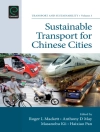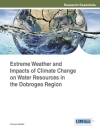This monograph provides an up-to-date overview on methods and techniques in seismology, with a focus on describing and detecting seismic waves in anisotropic media. The author discusses structural, physical and mechanical aspects of the crust by analyzing earthquake data from field studies, rendering the book a practical reference for researchers in seismology and applied geophysics.
Contents:
Rock Anisotropy, Fracture and Earthquake Assessment
Seismic Wave Propagation in Anisotropic Rocks with Applications to Defining Fractures in Earth Crust
Reproducing the Realistic Compressive-tensile Strength Ratio of Rocks using Discrete Element Model
Rock Fracture under Static and Dynamic Stress
Multiple Linear Regression Analyses on the Relationships among Magnitude, Rupture Length, Rupture Width, Rupture Area, and Surface Displacement
PI Algorithm Applied to the Sichuan-Yunnan Region: A Statistical Physics Method for Intermediate-term Medium-range Earthquake Forecast in Continental China
Probabilistic Seismic Hazard Assessment for Pacific Island Countries
Cuprins
Table of content:
Chapter 1 Seismic Wave Propagation in Anisotropic Rocks with Applications to Defining Fractures in Earth Crust
1.1 Introduction
1.2 Elastic Anisotropy of Crustal Rocks
1.3 Plane Wave Propagation in Homogeneous Anisotropic Medium
1.4 Reflection and Refraction of Plane Waves at a Planar Boundary between Anisotropic Media
1.5 Ray Tracing in Anisotropic Heterogeneous Media
1.6 Ray Series Modeling of Seismic Wave Propagation in 3-D Heterogamous Anisotropic Media
1.7 Observation and Modeling of Fault-Zone Fracture Seismic Anisotropy
1.8 Shear Wave Splitting Observations and Implications on Stress Regimes in the Los Angeles Basin, California
Acknowledgement
References
Chapter 2 Reproducing the Realistic Compressive-tensile Strength Ratio of Rocks using Discrete Element Model
2.1 Introduction
2.2 A Brief Introduction to the ESy S-Particle
2.3 The New Criterion for Bond Breakage
2.4 Calibration procedures
2.5 Parametric Studies
2.6 Discussions and Conclusions
Acknowledgement
References
Chapter 3 Rock Fracture under Static and Dynamic Stress
3.1 Introduction
3.2 Stress Intensity Factor And Stress Field The Sichuan-Yunan Region
3.3 Coulombchuan-Yunan Regionnd St
3.4 Energy Release and J-integral
3.5 Crack Growth
3.6 Crack Growth under Dynamic Loading
3.7 Cohesive Model in Rock Fracture
3.8 Numeric Method for Fracture Mechanics
3.9 Discussion
Acknowledgement
References
Chapter 4 Multiple Linear Regression Analyses on the Relationships among Magnitude, Rupture Length, Rupture Width, Rupture Area, and Surface Displacement
4.1 Introduction
4.2 Data
4.3 Linear Models and Computational Approach
4.4 Results
4.5 Consluding Remarks
Acknowledgments
References
Chapter 5 PI Algorithm Applied to the Sichuan-Yunnan Region: A Statistical Physics Method for Intermediate-term Medium-range Earthquake Forecast in Continental China
5.1 The PI Algorithm
5.2 The Sichuan-Yunan Region
5.3 PI Algorithm Applied to the Sichuan-Yunnan Region
5.4 Discussion and Development of the PI Application
5.5 Concluding Remark
Acknowledgement
References
Chapter 6 Probabilistic Seismic Hazard Assessment for Pacific Island Countries
6.1 Introduction
6.2 Data
6.3 Kinematic Modeling Based on GPS and Active Faults
6.4 Modeling the Regional Seismicity
6.5 Probabilistic Seismic Hazard Maps
6.6 Discussion
Acknowledgments
References
Despre autor
Yonggang Li, University of Southern California, Los Angeles, USA












